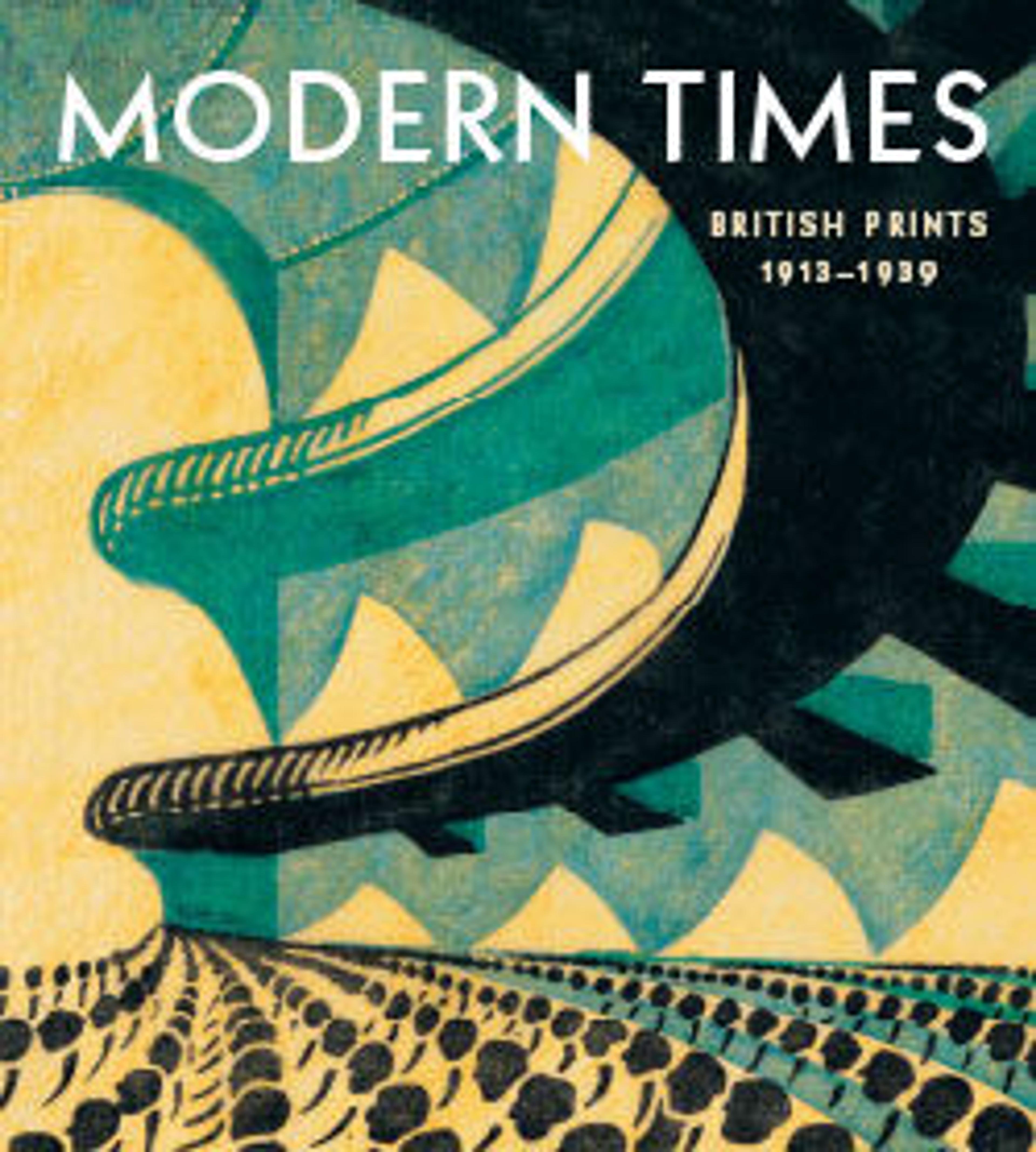Rush Hour
Rush Hour was made a year after Andrews' Straphangers and can be read as a reverse of the earlier work. Here, Andrews flipped the crescent shape from the bottom of the sheet to the sides and multiplied it to create a platform for the figures. She utilized vivid orange and blue tones for both the escalator stairs and the commuters bodies, thus unifying them against the white tone of the sheet. Rather than showing the commuters’ heads and upper bodies, she depicted three sets of legs belonging to anonymous passengers of both genders as they gingerly navigate the spiky orange and blue shapes representing wooden escalator steps. The pointed edges of the steps appear to have been derived from Cyril Power’s escalators, again testifying to the artists’ close working relationship and mutual influence.
Artwork Details
- Title: Rush Hour
- Artist: Sybil Andrews (Canadian (born England), Bury St. Edmunds, Suffolk 1898–1992 Victoria, British Columbia)
- Date: 1930
- Medium: Color linocut on Japanese paper
- Dimensions: Sheet: 9 1/4 × 11 1/4 in. (23.5 × 28.6 cm)
Image: 8 1/4 × 9 7/8 in. (20.9 × 25.1 cm) - Classification: Prints
- Credit Line: Purchase, Leslie and Johanna Garfield Gift, Lila Acheson Wallace, Charles and Jessie Price, and David T Schiff Gifts, The Elisha Whittelsey Collection, The Elisha Whittelsey Fund, Dolores Valvidia Hurlburt Bequest, PECO Foundation and Friends of Drawings and Prints Gifts, and funds from various donors, 2019
- Object Number: 2019.592.670
- Curatorial Department: Drawings and Prints
More Artwork
Research Resources
The Met provides unparalleled resources for research and welcomes an international community of students and scholars. The Met's Open Access API is where creators and researchers can connect to the The Met collection. Open Access data and public domain images are available for unrestricted commercial and noncommercial use without permission or fee.
To request images under copyright and other restrictions, please use this Image Request form.
Feedback
We continue to research and examine historical and cultural context for objects in The Met collection. If you have comments or questions about this object record, please complete and submit this form. The Museum looks forward to receiving your comments.
